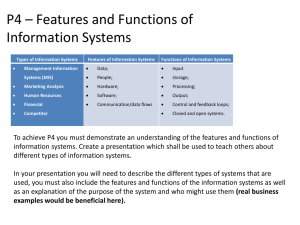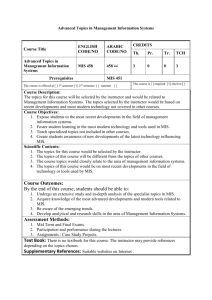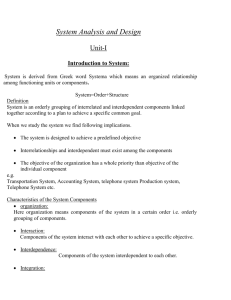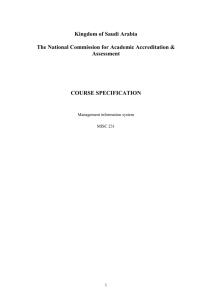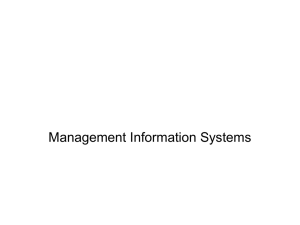Toward a Comprehensive Framework for MIS Research
advertisement
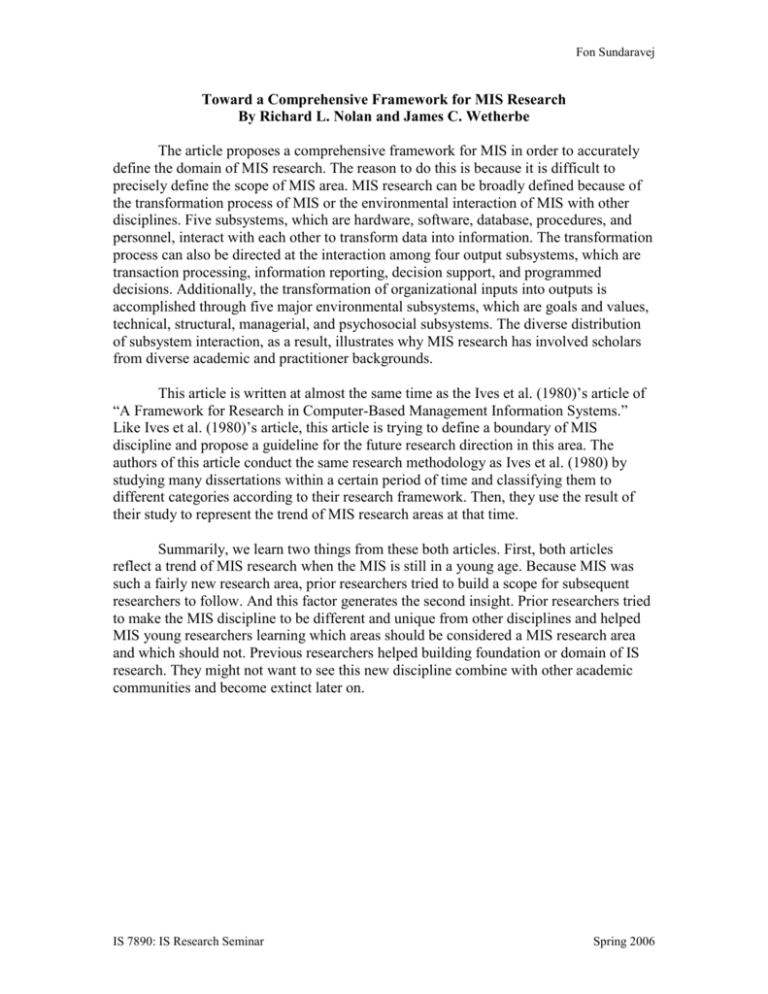
Fon Sundaravej Toward a Comprehensive Framework for MIS Research By Richard L. Nolan and James C. Wetherbe The article proposes a comprehensive framework for MIS in order to accurately define the domain of MIS research. The reason to do this is because it is difficult to precisely define the scope of MIS area. MIS research can be broadly defined because of the transformation process of MIS or the environmental interaction of MIS with other disciplines. Five subsystems, which are hardware, software, database, procedures, and personnel, interact with each other to transform data into information. The transformation process can also be directed at the interaction among four output subsystems, which are transaction processing, information reporting, decision support, and programmed decisions. Additionally, the transformation of organizational inputs into outputs is accomplished through five major environmental subsystems, which are goals and values, technical, structural, managerial, and psychosocial subsystems. The diverse distribution of subsystem interaction, as a result, illustrates why MIS research has involved scholars from diverse academic and practitioner backgrounds. This article is written at almost the same time as the Ives et al. (1980)’s article of “A Framework for Research in Computer-Based Management Information Systems.” Like Ives et al. (1980)’s article, this article is trying to define a boundary of MIS discipline and propose a guideline for the future research direction in this area. The authors of this article conduct the same research methodology as Ives et al. (1980) by studying many dissertations within a certain period of time and classifying them to different categories according to their research framework. Then, they use the result of their study to represent the trend of MIS research areas at that time. Summarily, we learn two things from these both articles. First, both articles reflect a trend of MIS research when the MIS is still in a young age. Because MIS was such a fairly new research area, prior researchers tried to build a scope for subsequent researchers to follow. And this factor generates the second insight. Prior researchers tried to make the MIS discipline to be different and unique from other disciplines and helped MIS young researchers learning which areas should be considered a MIS research area and which should not. Previous researchers helped building foundation or domain of IS research. They might not want to see this new discipline combine with other academic communities and become extinct later on. IS 7890: IS Research Seminar Spring 2006




